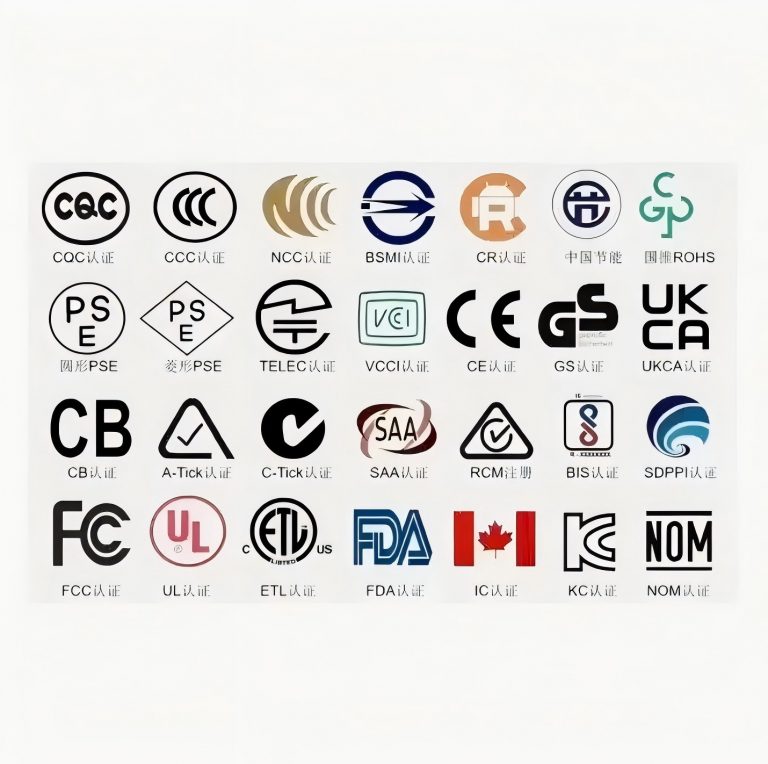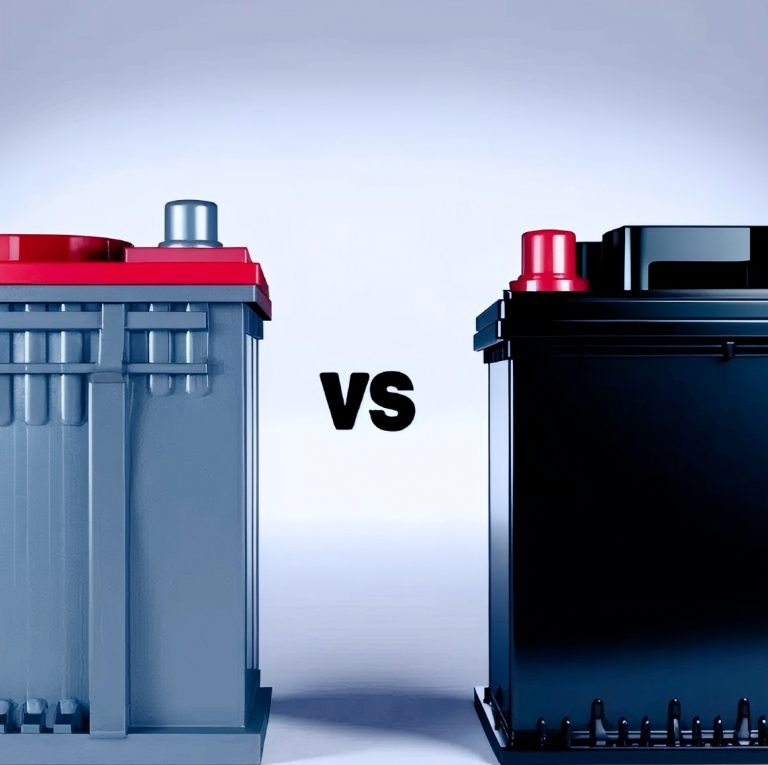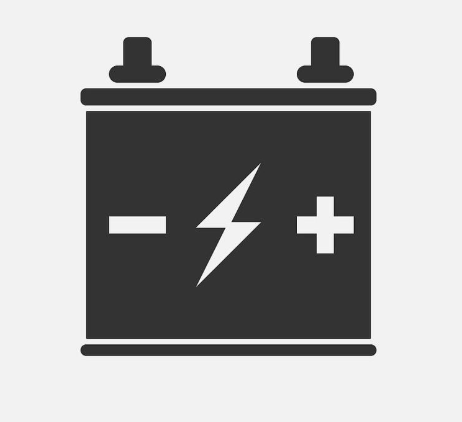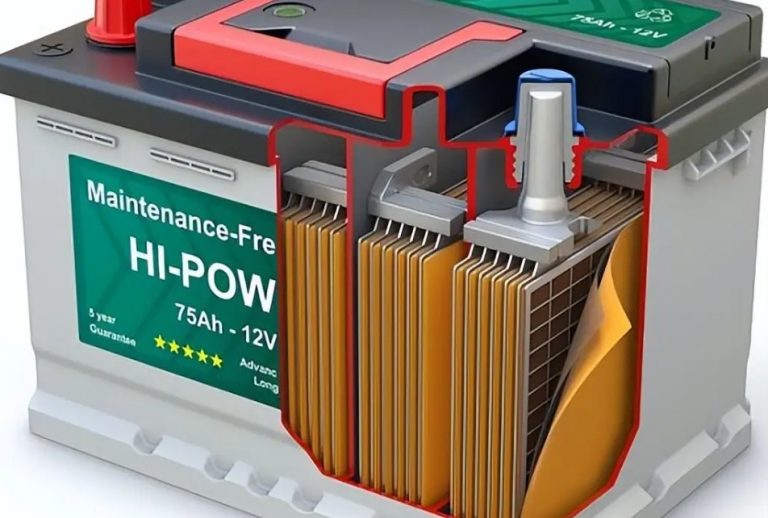How Much Does A Car Battery Cost? In-Depth Analysis
How Much Does A Car Battery Cost? Car batteries reflect the product’s technological level and production cost and are also closely related to brand reputation, origin, product series, and consumer demand. It faces a market of products ranging from tens to hundreds of dollars, and many car owners and distributors are often puzzled: What should be the cost of a car battery, and how do you choose the right product according to specific needs? Here, we will delve into multiple aspects to analyze the factors behind car battery pricing and provide comprehensive recommendations for procurement, distribution, and consumer choice.
1. Car Battery Brand Tiers and Price Differences
Currently, the quality and price of car batteries vary significantly among brands. Generally, brands can be divided into three tiers:
1.1 Tier One – High-End Flagships
- Representative Brands: Brands such as Bosch, VARTA, Exide, Optima, Yuasa, etc. (some internationally renowned brands).
- Price Range: In the European and American markets, prices typically range from $200 to $400; in the Chinese market, imported high-end products might be priced between 2,000 to 3,000 RMB or even higher.
- Reasons for Higher Prices:
- Research and Development Investment: Tier-one brands usually have strong R&D capabilities and adopt advanced technologies (such as AGM, EFB, etc.), which enhance battery durability and safety.
- Quality Control: Strict production processes and quality inspections ensure product stability and extend the service life (typically 4–6 years).
- After-Sales Service: Superior after-sales support and longer warranty periods build consumer confidence.
- Brand Premium: With a well-established reputation and strong market recognition, these brands command a natural price premium.
1.2 Tier Two – Mid-Range Selections
- Representative Brands: Brands such as Johnson Controls, certain series from Yuasa, and some well-known domestic brands (which have upgraded their technology to enter the mid-to-high end market).
- Price Range: Generally priced between $100 and $200, and in the Chinese market, around 1,000 to 2,000 RMB.
- Reasons for the Price:
- Balanced Cost-Performance: Although not as technologically advanced as high-end brands, mid-range brands meet the daily needs of most consumers while offering good cost performance.
- Cost Control: These brands strike a balance between raw material costs and production processes, ensuring good quality while keeping costs down.
- Market Positioning: Targeted at the mass market, their product cycles are relatively quick, and they aim for steady market performance.
1.3 Tier Three – Budget Entry-Level
- Representative Brands: Mostly local or niche manufacturers with limited brand influence.
- Price Range: Typically under $100 (in China, roughly between 300 to 800 RMB).
- Reasons for Lower Prices:
- Lower Production Costs: These batteries are made using basic processes and materials with lower technological content and less investment in manufacturing equipment.
- Limited After-Sales Support: Shorter warranty periods and less stable quality, with an expected lifespan of only 2–3 years.
- Market Strategy: They capture markets highly sensitive to price through low cost, though long-term reliability may be an issue.
Case Comparison: A high-end AGM battery from VARTA may sell for around $350 in the European/American market, while a tier-two product with similar specifications might be priced at $150, and an entry-level product could cost around $80. Consumers consider not only the upfront cost but also the long-term usage and potential maintenance expenses.
2. Price Differences Based on Origin
Apart from brand tiers, the origin of a car battery is another crucial factor influencing its price. Different countries and regions vary in production processes, raw material sourcing, technical standards, and environmental regulations—all of which are reflected in the final product price.
2.1 European Manufacturing
- Characteristics: Examples include VARTA batteries made in Germany or products from Italy and France.
- Price Premium: Generally higher prices, often with a 20–30% premium, reflecting stringent quality control and higher production costs.
- Reasons:
- High Production Standards: The strict environmental and safety standards in the European Union require significant investment in equipment and testing.
- Raw Material Costs: Some raw materials are more expensive, driving up production costs.
- Brand Premium: European brands have long-standing reputations that contribute to higher market recognition.
2.2 Asian Manufacturing (Mainly China, Japan, Korea)
- Chinese Manufacturing:
- Advantages: With large-scale production and a well-established supply chain, Chinese manufacturers can achieve lower production costs—sometimes 30% lower than imported products.
- Quality Variance: While high-end products are continuously improving, lower-end products may still exhibit inconsistent manufacturing quality.
- Japanese and Korean Manufacturing:
- Advantages: These products focus on technology and innovation; while slightly more expensive than some Chinese products, they often excel in performance and stability, typically positioned in the mid-to-high range.
- Case Data: In the Chinese market, a standard lead-acid battery made domestically might cost around 500 RMB, while an imported battery of the same type might be priced at 1,500 RMB. For an AGM battery with the same specifications, domestic products generally cost around 1,500 RMB, whereas imported ones could exceed 2,500 RMB.
2.3 North American Manufacturing
- Characteristics: Batteries manufactured in the United States and Canada are typically positioned as high-quality products with strict production standards.
- Price: Prices are similar to or slightly lower than European products, but with a stronger emphasis on after-sales service and brand assurance.
3. Analysis of Price and Technical Differences by Battery Series
Car batteries can be classified based on their internal structure, technological features, and intended application. The main series include:
3.1 Standard Lead-Acid Batteries
- Price Range: Generally around $50 to $100 (or approximately 300 to 800 RMB in China).
- Characteristics: Mature technology primarily used for starting systems; suitable for most traditional fuel vehicles.
- Reasons for Price Differences:
- Simple Manufacturing Process: With relatively static technology, production costs remain low.
- Performance Limitations: With a lifespan of 3–4 years, these are ideal for cost-sensitive consumers.
3.2 Maintenance-Free Batteries (Sealed Lead Acid, SLA)
- Price Range: Approximately $80 to $150 (around 800 to 1,500 RMB domestically).
- Characteristics: Sealed design that requires no electrolyte topping-up, offering easier maintenance and higher safety.
- Reasons for Price Differences:
- Technological Upgrades: Additional processes for leak and corrosion prevention extend the lifespan (usually 4–5 years).
- Enhanced Production Standards: More rigorous production and quality testing increase the overall cost.
3.3 AGM Batteries (Absorbent Glass Mat)
- Price Range: Generally $150 to $300 (roughly 1,500 to 3,000 RMB in China).
- Characteristics: Use glass fiber mats to absorb the electrolyte, offering better discharge performance and shock resistance—ideal for high-end vehicles and extreme conditions.
- Reasons for Price Differences:
- Advanced Technology: More complex internal structure supports deep cycling and is suitable for start-stop systems and smart cars.
- Extended Lifespan: Often lasting over 5 years, they offer higher long-term cost performance.
3.4 EFB Batteries (Enhanced Flooded Batteries)
- Price Range: Priced between standard batteries and AGM batteries, typically $100 to $200 (around 1,000 to 2,000 RMB domestically).
- Characteristics: Designed specifically for start-stop systems, offering improved cycle life and durability compared to regular lead-acid batteries.
- Reasons for Price Differences:
- Targeted Design: While not as advanced as AGM batteries, they effectively meet the demands of the mid-range market for start-stop systems, with better cost control.
3.5 New Lithium-Ion Batteries
- Price Range: Considerably expensive, generally starting at $400 to $800 or more (domestic prices often exceed 3,000 RMB).
- Characteristics: Lightweight, high energy density, and long lifespan, though the technology is not yet widely adopted and is mostly used in high-end or specialized vehicles.
- Reasons for Price Differences:
- High Technological Barrier: The R&D and production costs are significantly high due to advanced materials and manufacturing processes.
- Market Positioning: Primarily aimed at new energy vehicles or high-performance models, where efficiency and energy savings are paramount.
Example Explanation: A luxury vehicle originally equipped with an AGM battery may have a market retail price of around $250, while the same model using a standard lead-acid battery might cost only about $80 initially—but the start-stop performance, durability, and user experience can be markedly different.
4. Matching Recommendations Based on Customer Needs and Procurement/Agency Suggestions for Distributors
Different customer groups have varying requirements. Distributors and agents should tailor their strategies according to their target markets:
4.1 Recommendations for End Consumers
- Urban Commuters:
- Needs: Reliable daily starting performance with a focus on cost sensitivity.
- Recommended Products: Standard lead-acid or maintenance-free batteries that meet basic needs at an affordable price.
- Users in Cold or Extreme Environments:
- Needs: Excellent cold-start performance and good high-temperature resistance.
- Recommended Products: Preferably choose AGM batteries or high-end products processed with special techniques.
- High-End Vehicles or Start-Stop System Users:
- Needs: High demands on battery lifespan and response time.
- Recommended Products: Select AGM or EFB series products to ensure stable long-term operation.
- New Energy and High-Performance Car Users:
- Needs: Lightweight, high energy density, and long cycle life.
- Recommended Products: Lithium-ion batteries, which may have a higher upfront cost but offer clear long-term advantages.
4.2 Procurement Recommendations for Distributors and Agents
- Inventory Allocation:
- It is recommended to stock products across all three tiers to meet the diverse needs of different market segments. Tier one products can target the high-end market and enhance brand image, tier two products can serve as the mainstay, and tier three products can be used in price-sensitive regions or promotional activities.
- Supply Chain Management:
- Establish stable partnerships with renowned domestic and international brands, monitor fluctuations in raw material prices, and ensure that procurement costs remain within reasonable limits.
- After-Sales Service System:
- Strengthen after-sales inspection and repair capabilities, offer extended warranty and exchange programs, thereby enhancing customer satisfaction and brand loyalty.
- Market Promotion Strategy:
- Develop differentiated promotional campaigns tailored to various consumer segments—for example, highlight the superior performance of AGM batteries for performance-focused users and emphasize the high cost-performance ratio of standard batteries for budget-conscious consumers.
5. Consumer Psychology Research and Recommendations Based on Buyer Categories
When choosing a car battery, consumers are often influenced by personal expectations, budget constraints, and brand trust. Broadly, consumers can be categorized into three groups: high-end, mid-range, and budget buyers.
5.1 High-End Consumers
- Psychological Traits: Emphasize quality, brand, user experience, and long-term benefits. They are less sensitive to price and willing to pay a premium for better safety, durability, and after-sales support.
- Recommendations:
- Prioritize tier one brands and high-technology products (such as AGM or lithium-ion batteries).
- Focus on products with extended warranty periods and positive user reviews to ensure long-term stability.
- Consider additional after-sales services and professional installations to ensure driving safety.
5.2 Mid-Range Consumers
- Psychological Traits: Seek a balance between price and quality, wanting a product that offers good performance without breaking the bank.
- Recommendations:
- Opt for tier two brands or EFB series products that typically balance reliability with cost efficiency.
- Compare quotes and after-sales services across multiple channels to choose the product with the best cost-performance ratio.
- Pay attention to energy efficiency and environmental suitability to avoid extra maintenance costs from a mismatched choice.
5.3 Budget Consumers
- Psychological Traits: Highly price-sensitive with a focus on short-term cost savings, sometimes at the expense of long-term quality and safety.
- Recommendations:
- While budget (tier three) products have lower initial costs, ensure that basic quality certifications and usage standards are met to avoid frequent replacements and hidden costs.
- Consider entry-level products with good reputations to balance price and performance.
- It is advisable to consult professionals to understand the vehicle’s specific requirements, preventing overly low-cost choices that might compromise safety.
Survey Example: Research in one region revealed that about 40% of consumers lean towards mid-range products, while nearly 30% of high-end buyers prefer AGM batteries with warranty periods exceeding 4 years; the remainder tend to focus on low prices, though feedback often indicates that budget products suffer from a shorter lifespan and frequent maintenance issues.
6. Key Factors Affecting Car Battery Prices and Purchase/Usage Guides
When selecting and purchasing a car battery, several key factors directly influence its price and performance:
6.1 Key Influencing Factors
- Battery Capacity and Specifications (Ah, CCA, etc.)
Higher capacity and better cold cranking amps (CCA) typically mean higher production costs and longer service life. - Technological Content and Type
Advanced technologies like AGM, EFB, and lithium-ion involve more complex R&D and production processes, leading to higher prices. - Raw Material Costs
Price fluctuations in key materials (such as lead and electrolyte) directly affect production costs and eventually the end price. - Brand and After-Sales Service
Well-known brands invest more in quality control, R&D, and service networks, which is reflected in their premium pricing. - Origin and Production Process
Products manufactured in developed countries or high-standard factories incur higher production costs due to stricter manufacturing processes and equipment investments.
6.2 How to Buy: A Purchase Guide
- Understand Your Needs
Determine the required battery specifications based on your vehicle type, driving conditions (urban, mountainous, extreme climates), and whether your car uses a start-stop system. - Compare Multiple Quotes
Consult reliable channels and compare products from different brands and origins to avoid sacrificing quality for a low price. - Focus on After-Sales and Warranty
Check the warranty period, after-sales network, and user reviews to ensure prompt and effective service in case of any issues. - Seek Professional Advice
Consult auto repair shops or professional technicians to gather real-world feedback on different brands and series. - Verify Product Certifications
Choose products that have passed relevant quality and safety certifications, ensuring they meet industry standards and national regulations.
6.3 How to Use: A Usage Guide
- Proper Installation
Have the battery installed by professionals according to the product manual to ensure secure connections and avoid short circuits. - Regular Maintenance and Inspection
Conduct at least one annual battery check and top up the electrolyte (if applicable) to extend battery life. - Consider Environmental Factors
Avoid exposing the battery to prolonged high temperatures, low temperatures, or moisture; use protective measures such as thermal insulation if necessary. - Timely Replacement and Recycling
Replace the battery promptly when performance declines, ensuring driving safety; dispose of old batteries in accordance with environmental regulations to reduce pollution.
7. Data, Cases, and Practical Examples
To provide readers with a clearer picture of the market, below are some data points and case studies:
Price Data Examples:
- European and American Markets:
- Standard lead-acid batteries: Approximately $80–$150;
- AGM batteries: Around $200–$400;
- Lithium-ion batteries: Starting from about $400, with some high-end models exceeding $800.
- Chinese Market:
- Entry-level products: 300–800 RMB;
- Mid-range products: 1,000–2,000 RMB;
- High-end imported products: 2,000–3,000 RMB or even higher.
- European and American Markets:
Case Studies:
- A luxury sedan originally equipped with an AGM battery has a warranty period of 5 years with a retail price of approximately $250. In the same vehicle model, using a standard lead-acid battery might only cost about $100 initially; however, in extremely cold regions, the starting performance is inadequate, leading to repeated repairs and significantly higher cumulative maintenance costs.
- A taxi company, after thorough market research, opted for a mid-range EFB battery priced at about $150 per unit. Despite its moderate price, in a start-stop operational environment, its lifespan extended nearly 30% longer than low-end alternatives, reducing overall costs by more than 15%.
Consumer Feedback Data:
- In surveys among high-end consumers, over 70% were willing to pay extra for extended warranties and more stable starting performance.
- Mid-range consumers generally found that products priced between $120–$180 offered the best balance of performance and price.
- Feedback from budget market users indicated that although low initial costs reduce upfront investment, frequent replacements and repairs eventually increase the long-term cost.
8. Conclusion and Recommendations
In summary, car battery prices are influenced by a combination of factors including brand tier, origin, product series, technological content, raw material costs, and after-sales service. With products ranging from tens to hundreds of dollars, car owners, distributors, and agents should make informed decisions based on their specific needs.
Recommendations for End Consumers:
- High-End Users: Opt for products with advanced technology and robust after-sales services, ensuring long-term reliability and safety.
- Mid-Range Users: Strike a balance between price and performance by choosing well-established brands or series that have proven their cost-effectiveness.
- Budget Users: While focusing on lower prices, pay attention to basic quality and after-sales support to avoid hidden long-term costs.
Recommendations for Distributors and Agents:
- Develop a multi-tiered product line to cater to different regions and consumer segments.
- Strengthen partnerships with reputable brands and establish a solid after-sales network.
- Regularly monitor raw material price trends and technological developments to adjust procurement strategies accordingly.
In practical purchasing and usage, it is essential to verify product certifications, ensure professional installation, and maintain regular upkeep. With careful selection and proper maintenance, not only can battery life be extended, but overall vehicle running costs can also be reduced.


















